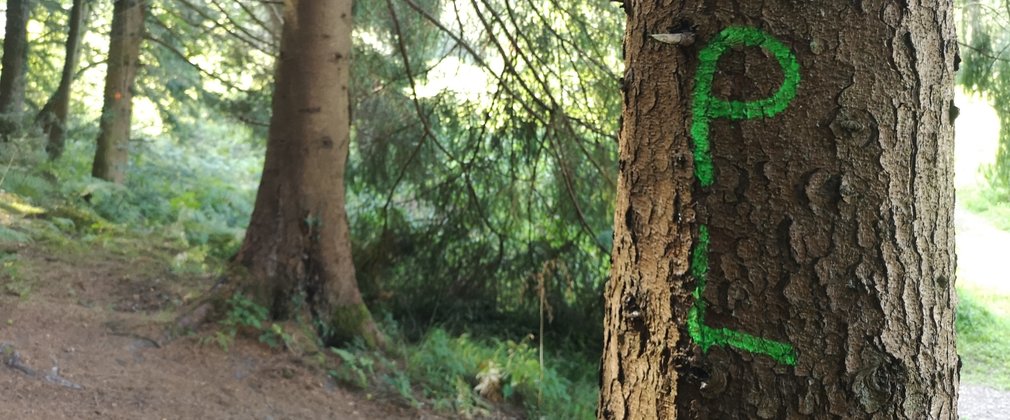Harcombe is a working woodland producing sustainable timber. We are working in the forest during winter 2024 and spring 2025. This page provides more information about the work we're doing.
The timber from Harcombe is certified by the Forest Stewardship Council® (FSC®) and the Programme for the Endorsement of Forest Certification (PEFC) as being sustainably produced.
What is happening?
We are thinning the trees in the southern area of Harcombe. This means removing selected trees for timber products. This gives the remaining trees more space and light to grow to their full potential.
Thinning also allows more light to reach the forest floor, which improves the habitat for ground flora and the wildlife it supports. These changes improve the biodiversity of the forest which support its resilience against pests, diseases, and our changing climate.
Can I still visit Harcombe?
Harcombe is open to visitors throughout the forestry work but sections of the horse riding trail and other forest roads in this area will be closed to allow us to work safely. We will work hard to keep disruption to a minimum but there might be times when other access will be closed so we can work safely nearby. Harcombe is a working landscape, please be prepared to encounter vehicles and machinery.
It is essential for the safety of our visitors, staff, contractors, and volunteers that everyone follows all signs, diversions, and closures at all times, whether or not you can see or hear us working. Forestry work sites are very hazardous. A falling tree can weigh several tonnes and hit the ground at nearly 60mph. If a harvesting machine chainsaw snaps, it can fly through the forest like a bullet.
What about the wildlife?
Harvesting trees is an important part of sustainable forest management and well managed forests support more wildlife. Before we start any forestry work, we carry out thorough ecological surveys to check for species such as birds, mammals, rodents, invertebrates, flora, and fungi. This enables us to identify ecological constraints such as the presence of European Protected Species and Schedule 1 protected birds, which affect the time of year when certain operations can be carried out.
We consider our findings against complex factors including tree health, how the ground slopes, soil condition, and likely rainfall when planning forestry work. While working, we continue to check for wildlife and adapt, pause, or suspend work if necessary.
There is no perfect time of year to carry out essential forest management work. We are starting work at the end of the bird nesting season but before the important dormouse hibernation period. There are lots of factors to balance and there is more information on our website.
Where can I find out more?
You can read our full forest plan for Harcombe online. If you have any questions about our work in the Forest, please email us.

